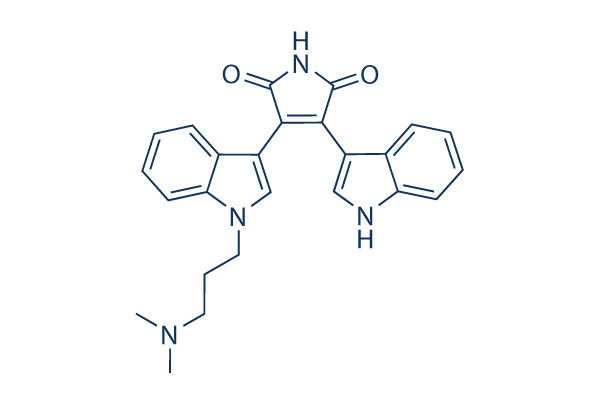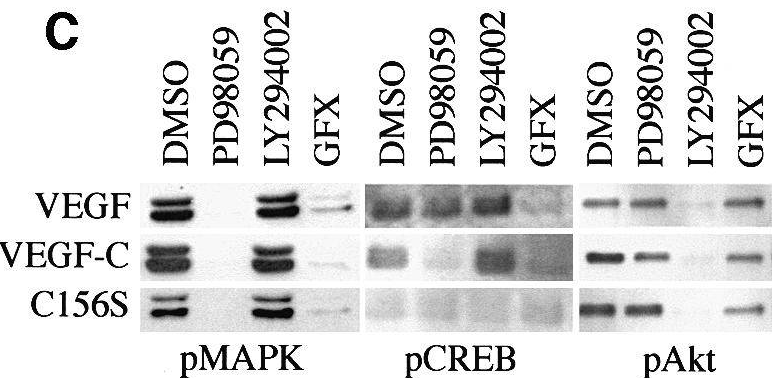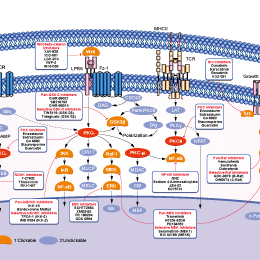
- Bioactive Compounds
- By Signaling Pathways
- PI3K/Akt/mTOR
- Epigenetics
- Methylation
- Immunology & Inflammation
- Protein Tyrosine Kinase
- Angiogenesis
- Apoptosis
- Autophagy
- ER stress & UPR
- JAK/STAT
- MAPK
- Cytoskeletal Signaling
- Cell Cycle
- TGF-beta/Smad
- DNA Damage/DNA Repair
- Compound Libraries
- Popular Compound Libraries
- Customize Library
- Clinical and FDA-approved Related
- Bioactive Compound Libraries
- Inhibitor Related
- Natural Product Related
- Metabolism Related
- Cell Death Related
- By Signaling Pathway
- By Disease
- Anti-infection and Antiviral Related
- Neuronal and Immunology Related
- Fragment and Covalent Related
- FDA-approved Drug Library
- FDA-approved & Passed Phase I Drug Library
- Preclinical/Clinical Compound Library
- Bioactive Compound Library-I
- Bioactive Compound Library-Ⅱ
- Kinase Inhibitor Library
- Express-Pick Library
- Natural Product Library
- Human Endogenous Metabolite Compound Library
- Alkaloid Compound LibraryNew
- Angiogenesis Related compound Library
- Anti-Aging Compound Library
- Anti-alzheimer Disease Compound Library
- Antibiotics compound Library
- Anti-cancer Compound Library
- Anti-cancer Compound Library-Ⅱ
- Anti-cancer Metabolism Compound Library
- Anti-Cardiovascular Disease Compound Library
- Anti-diabetic Compound Library
- Anti-infection Compound Library
- Antioxidant Compound Library
- Anti-parasitic Compound Library
- Antiviral Compound Library
- Apoptosis Compound Library
- Autophagy Compound Library
- Calcium Channel Blocker LibraryNew
- Cambridge Cancer Compound Library
- Carbohydrate Metabolism Compound LibraryNew
- Cell Cycle compound library
- CNS-Penetrant Compound Library
- Covalent Inhibitor Library
- Cytokine Inhibitor LibraryNew
- Cytoskeletal Signaling Pathway Compound Library
- DNA Damage/DNA Repair compound Library
- Drug-like Compound Library
- Endoplasmic Reticulum Stress Compound Library
- Epigenetics Compound Library
- Exosome Secretion Related Compound LibraryNew
- FDA-approved Anticancer Drug LibraryNew
- Ferroptosis Compound Library
- Flavonoid Compound Library
- Fragment Library
- Glutamine Metabolism Compound Library
- Glycolysis Compound Library
- GPCR Compound Library
- Gut Microbial Metabolite Library
- HIF-1 Signaling Pathway Compound Library
- Highly Selective Inhibitor Library
- Histone modification compound library
- HTS Library for Drug Discovery
- Human Hormone Related Compound LibraryNew
- Human Transcription Factor Compound LibraryNew
- Immunology/Inflammation Compound Library
- Inhibitor Library
- Ion Channel Ligand Library
- JAK/STAT compound library
- Lipid Metabolism Compound LibraryNew
- Macrocyclic Compound Library
- MAPK Inhibitor Library
- Medicine Food Homology Compound Library
- Metabolism Compound Library
- Methylation Compound Library
- Mouse Metabolite Compound LibraryNew
- Natural Organic Compound Library
- Neuronal Signaling Compound Library
- NF-κB Signaling Compound Library
- Nucleoside Analogue Library
- Obesity Compound Library
- Oxidative Stress Compound LibraryNew
- Plant Extract Library
- Phenotypic Screening Library
- PI3K/Akt Inhibitor Library
- Protease Inhibitor Library
- Protein-protein Interaction Inhibitor Library
- Pyroptosis Compound Library
- Small Molecule Immuno-Oncology Compound Library
- Mitochondria-Targeted Compound LibraryNew
- Stem Cell Differentiation Compound LibraryNew
- Stem Cell Signaling Compound Library
- Natural Phenol Compound LibraryNew
- Natural Terpenoid Compound LibraryNew
- TGF-beta/Smad compound library
- Traditional Chinese Medicine Library
- Tyrosine Kinase Inhibitor Library
- Ubiquitination Compound Library
-
Cherry Picking
You can personalize your library with chemicals from within Selleck's inventory. Build the right library for your research endeavors by choosing from compounds in all of our available libraries.
Please contact us at info@selleckchem.com to customize your library.
You could select:
- Antibodies
- Bioreagents
- qPCR
- 2x SYBR Green qPCR Master Mix
- 2x SYBR Green qPCR Master Mix(Low ROX)
- 2x SYBR Green qPCR Master Mix(High ROX)
- Protein Assay
- Protein A/G Magnetic Beads for IP
- Anti-Flag magnetic beads
- Anti-Flag Affinity Gel
- Anti-Myc magnetic beads
- Anti-HA magnetic beads
- Poly DYKDDDDK Tag Peptide lyophilized powder
- Protease Inhibitor Cocktail
- Protease Inhibitor Cocktail (EDTA-Free, 100X in DMSO)
- Phosphatase Inhibitor Cocktail (2 Tubes, 100X)
- Cell Biology
- Cell Counting Kit-8 (CCK-8)
- Animal Experiment
- Mouse Direct PCR Kit (For Genotyping)
- New Products
- Contact Us
research use only
Bisindolylmaleimide I (GF109203X)
PKC inhibitor
Bisindolylmaleimide I (GF109203X, GO 6850) is a potent PKC inhibitor with IC50 of 20 nM, 17 nM, 16 nM, and 20 nM for PKCα, PKCβI, PKCβII, and PKCγ in cell-free assays, respectively, showing more than 3000-fold selectivity for PKC as compared to EGFR, PDGFR and insulin receptor.

Chemical Structure
Molecular Weight: 412.48
Purity & Quality Control
Batch:
Purity:
99.07%
99.07
Related Products
| Related Targets | PKCα PKCβ PKCγ PKCδ PKCε PKCζ PKCη PKCθ PKCι | Click to Expand |
|---|---|---|
| Related Products | Go 6983 Sotrastaurin (AEB071) Enzastaurin PMA (Phorbol 12-myristate 13-acetate) Go6976 Bisindolylmaleimide IX (Ro 31-8220) Mesylate Ruboxistaurin (LY333531) HCl Rottlerin PKC-theta inhibitor Chelerythrine Chloride (NSC 646662) Darovasertib (LXS-196) Epsilon-V1-2 Dequalinium Chloride Myricitrin VTX-27 Chelerythrine | Click to Expand |
| Related Compound Libraries | Kinase Inhibitor Library PI3K/Akt Inhibitor Library MAPK Inhibitor Library Cell Cycle compound library TGF-beta/Smad compound library | Click to Expand |
Signaling Pathway
Cell Culture and Working Concentration
| Cell Lines | Assay Type | Concentration | Incubation Time | Formulation | Activity Description | PMID |
|---|---|---|---|---|---|---|
| RAW264.7 | Function assay | 24 hrs | Protection against Bacillus anthracis lethal toxin-mediated cytotoxicity in mouse RAW264.7 cells assessed as change in viability after 24 hrs by WST1 dye reduction assay, IC50=1.5μM | 17485504 | ||
| RAW264.7 | Function assay | Protection against Bacillus anthracis protective antigen and lethal toxin-diphtheria toxin chimeric protein mediated cytotoxicity in mouse RAW264.7 cells assessed as cell viability | 17485504 | |||
| CHO | Function assay | Inhibition of Bacillus anthracis anthrax protective antigen heptamer pre-pore to pore conversion in CMG2-expressing CHO cells | 19540764 | |||
| insect cells | Function assay | 120 mins | Inhibition of N-terminal GST tag LMTK3 kinase domain (133 to 415 amino acids) (unknown origin) expressed in insect cells incubated for 120 mins by radiometric fluorescent detection based CisBio KinEASE STK-S1 kit based assay, IC50=0.0001318μM | ChEMBL | ||
| Sf9 | Function assay | 30 min | Inhibition of GSK3beta (unknown origin) expressed in Sf9 cells using GS1 as substrate and [gamma32]ATP after 30 min by scinitllation counting, IC50=0.19055μM | ChEMBL | ||
| Click to View More Cell Line Experimental Data | ||||||
Mechanism of Action
| Features | Greater selectivity than PKC inhibitor staurosporine. GF109203X is a chemical probe for studying PKC signal transduction pathways. Potential for use in a variety of cancers. | ||||||||
|---|---|---|---|---|---|---|---|---|---|
| Targets |
|
In vitro |
||||
| In vitro | GF109203X, as an ATP-competitive PKC inhibitor, prevents platelet aggregation induced by stimuli that activate PKC, and has the potential as a tool for studying the involvement of PKC in signal transduction pathways. [1] GF 109203X produces reversal activity on P-glycoprotein and MRP -mediated multidrug resistance. [2] [3] PKC inhibition by GF109203X significantly reduces carbachol-stimulated ERK1/2 activation and the subsequent proliferation of SNU-407 colon cancer cells. [4] | |||
|---|---|---|---|---|
| Kinase Assay | Assay of protein kinase C | |||
| Protein kinase C is arrayed by measuring 32PI transferred from [gamma-32PI] ATP to lysine-rich histone type Ill-s. The reaction mixture (80 μL) contained 50 mM Tris-HCI. pH 7.4, 100 μM CaCl2, 10 mM MgCI2, 37.5 μL/mL histone type Ill-s, 10 μM [gamma-32PI] ATP (1250 cpm/pmol), 31 μM bovine brain phosphatidylserine and 0.5 μM 1,2 sn-dioleylglycerol. Fifteen μL of purified PKC (final concentration in assay 0.38 μg/mL) is added to the incubation mixture. After 10 min at 30°C, the reaction is stopped by addition of 30 μL of casein 30 mg/mL and 0.9 ml of 12% trichloroacetic acid. The acid precipitable material is collected by centrifugation, dissolved in 1N NaOH (100μL) and precipitated again with 1 ml of 12% trichloroacetic acid. The pellet is dissolved in 1N NaOH (100μL) and 32P incorporation is measured by scintillation counting in Aquasol. | ||||
| Cell Research | Cell lines | SNU-407 colon cancer cells | ||
| Concentrations | 1 μM | |||
| Incubation Time | 48 hours | |||
| Method | Cell proliferation is monitored by the 3-(4,5-dimethylthiazol-2-yl)-2,5-diphenyl tetrazolium bromide (MTT) assay. Cells are seeded in 96-well plates and allowed to grow overnight. The cells are serum-starved for 18–24 hours and then treated with 1 mM carbachol for 48 hours in 100 μL serum-free RPMI 1640. Inhibitors are added 30 min prior to carbachol treatment. Following the treatment, 10 μL of MTT solution (5 mg/ml) is applied to each well, and the plates were incubated for 3 h at 37 °C. After the medium is removed, the formazan crystals formed are solubilized in 100 μL DMSO. The absorbance at 570 nm is measured using a microplate reader and the background absorbance at 690 nm is subtracted. Each assay is performed in triplicate. |
|||
| Experimental Result Images | Methods | Biomarkers | Images | PMID |
| Western blot | pMAPK / pCREB / pAKT p-HDAC5 / HDAC5 p-PKD / PKD |

|
11532940 | |
In Vivo |
||
| In vivo | GF109203X (10 μg/mouse, i.pl.) dose-dependently inhibits BK-induced mechanical allodynia in Wistar rats. [5] | |
|---|---|---|
| Animal Research | Animal Models | Wistar rats |
| Dosages | 10 μg | |
| Administration | i.pl | |
References |
|
Chemical Information
| Molecular Weight | 412.48 | Formula | C25H24N4O2 |
| CAS No. | 133052-90-1 | SDF | -- |
| Synonyms | GO 6850 | ||
| Smiles | CN(C)CCCN1C=C(C2=CC=CC=C21)C3=C(C(=O)NC3=O)C4=CNC5=CC=CC=C54 | ||
Storage and Stability
| Storage (From the date of receipt) | |||
|
In vitro |
DMSO : 82 mg/mL ( (198.79 mM) Moisture-absorbing DMSO reduces solubility. Please use fresh DMSO.) Ethanol : 1 mg/mL Water : Insoluble |
Molecular Weight Calculator |
|
In vivo Add solvents to the product individually and in order. |
In vivo Formulation Calculator |
|||||
Preparing Stock Solutions
Molarity Calculator
In vivo Formulation Calculator (Clear solution)
Step 1: Enter information below (Recommended: An additional animal making an allowance for loss during the experiment)
mg/kg
g
μL
Step 2: Enter the in vivo formulation (This is only the calculator, not formulation. Please contact us first if there is no in vivo formulation at the solubility Section.)
% DMSO
%
% Tween 80
% ddH2O
%DMSO
%
Calculation results:
Working concentration: mg/ml;
Method for preparing DMSO master liquid: mg drug pre-dissolved in μL DMSO ( Master liquid concentration mg/mL, Please contact us first if the concentration exceeds the DMSO solubility of the batch of drug. )
Method for preparing in vivo formulation: Take μL DMSO master liquid, next addμL PEG300, mix and clarify, next addμL Tween 80, mix and clarify, next add μL ddH2O, mix and clarify.
Method for preparing in vivo formulation: Take μL DMSO master liquid, next add μL Corn oil, mix and clarify.
Note: 1. Please make sure the liquid is clear before adding the next solvent.
2. Be sure to add the solvent(s) in order. You must ensure that the solution obtained, in the previous addition, is a clear solution before proceeding to add the next solvent. Physical methods such
as vortex, ultrasound or hot water bath can be used to aid dissolving.
Tech Support
Answers to questions you may have can be found in the inhibitor handling instructions. Topics include how to prepare stock solutions, how to store inhibitors, and issues that need special attention for cell-based assays and animal experiments.
Tel: +1-832-582-8158 Ext:3
If you have any other enquiries, please leave a message.
* Indicates a Required Field






































